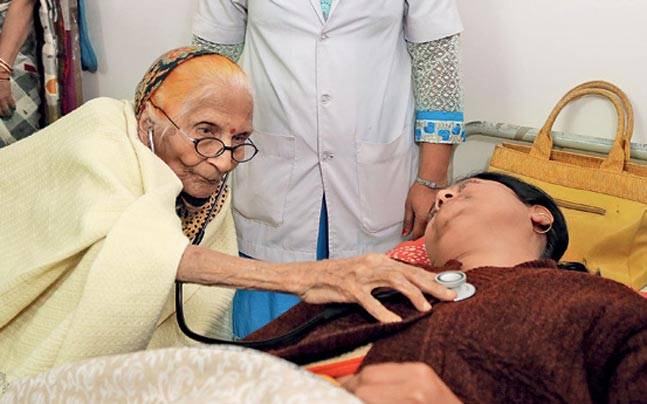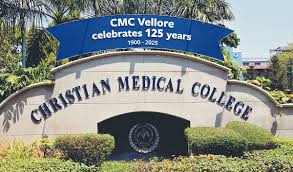In the bustling heart of Chennai, where traffic hums and life moves at a relentless pace, there exists an oasis of vision — Sankara Nethralaya. Known as one of India’s premier eye hospitals, it is not merely a center for ophthalmology; it is a sacred space where sight is restored, hope rekindled, and dreams illuminated.
The seeds of Sankara Nethralaya were sown in the mind of Dr. Sengamedu Srinivasa Badrinath, a brilliant ophthalmologist who had trained at Massachusetts Eye and Ear Infirmary in the United States. In the late 1970s, he returned to India, determined to give back to the land that had nurtured him. He saw firsthand the acute need for high-quality, affordable eye care in a country where blindness was not just a medical problem but a social and economic catastrophe.
But Dr. Badrinath’s vision went beyond building a good hospital. Inspired by the teachings of Kanchi Paramacharya, the spiritual leader of the Kanchi Kamakoti Peetham, he conceived of a hospital that would blend the best of modern medicine with the spirit of selfless service. The name “Sankara Nethralaya” itself, meaning “The Temple of the Eye,” reflected this fusion of science and spirituality.
Sankara Nethralaya began its journey in 1978 in a modest rented building with just a few beds and a small team of committed doctors and nurses. The early days were tough — long hours, limited resources, and a patient load that far outstripped the available infrastructure. But what they lacked in material wealth, they made up for in passion, dedication, and faith.
Word quickly spread. Here was a hospital where the poor were treated with the same dignity as the rich, where cutting-edge procedures were available without prohibitive costs, where patients felt not just treated, but truly cared for. Philanthropy flowed in. Volunteers joined hands. And Sankara Nethralaya began its transformation from a small eye hospital into a movement.
What set Sankara Nethralaya apart was its relentless focus on excellence. While compassion was its heart, discipline and quality were its backbone. Dr. Badrinath and his team set extremely high standards for clinical practice, patient care, and medical ethics — standards that rivaled the best hospitals globally. They invested heavily in training, research, and infrastructure, ensuring that Sankara Nethralaya was not just keeping up with the world’s best, but often leading it.
Sankara Nethralaya has been a pioneer in areas such as cataract surgery, corneal transplantation, and retinal disorders. It was among the first in India to adopt microsurgical techniques and later, laser and robotic surgeries. It created the Elite School of Optometry and the Vidyasagar Institute of Biomedical Science to nurture the next generation of medical and research talent.
But perhaps its greatest achievement lies in its ability to democratize access to world-class eye care. In India, where a significant portion of blindness is preventable, Sankara Nethralaya launched numerous community outreach programs. Mobile surgical units traveled to rural and semi-urban areas, screening thousands and conducting sight-saving surgeries at no cost. Public awareness campaigns educated millions about eye health, early intervention, and the dangers of neglect.
The hospital also initiated pathbreaking programs like the “Teleophthalmology” services, connecting expert doctors in Chennai to remote villages through satellite technology, long before telemedicine became a trend.
Today, Sankara Nethralaya treats over half a million patients annually and performs tens of thousands of surgeries. Its sprawling campus includes multiple specialty departments, research labs, training centers, and even a dedicated eye bank that has restored sight to thousands through corneal transplants.
And yet, despite its monumental growth, Sankara Nethralaya remains true to its founding ethos — to treat every patient as a guest in a temple, with kindness, respect, and humility. Its staff often refer to their work not as a job but as a service, an offering to society and to the divine.
Dr. Badrinath himself, now a revered figure in Indian medicine, remains humble about the achievements. For him, Sankara Nethralaya is not about brick and mortar, awards or accolades. It is about every child who sees their parents’ faces for the first time, every elderly woman who regains her independence, every artisan who can once again pursue their craft.
As India grapples with rising healthcare challenges, Sankara Nethralaya stands as a shining example of what can be achieved when compassion, vision, and discipline come together. It reminds us that healthcare, at its best, is not just about curing diseases — it’s about restoring dignity, empowering dreams, and illuminating lives.
Sankara Nethralaya is not merely a hospital. It is, truly, a temple — one where the gift of sight is celebrated every day, with gratitude and grace.




